Table of Contents
Introduction
The search landscape is evolving at lightning speed as AI-powered platforms change the way we find information. Traditional SEO isn’t the only game in town anymore; every year brings new engines and shifts in user behavior.
This evolution has led to the emergence of Answer Engine Optimization (AEO) and Generative Engine Optimization (GEO), two fresh frameworks designed for today’s AI-centric search environments.
Together, AEO, GEO, and SEO mark the next chapter in search optimization. It’s crucial to grasp how each of these works on its own—and how they connect—to create a strategy that remains relevant, visible, and competitive in our ever-changing digital world.
Understanding SEO (Search Engine Optimization)
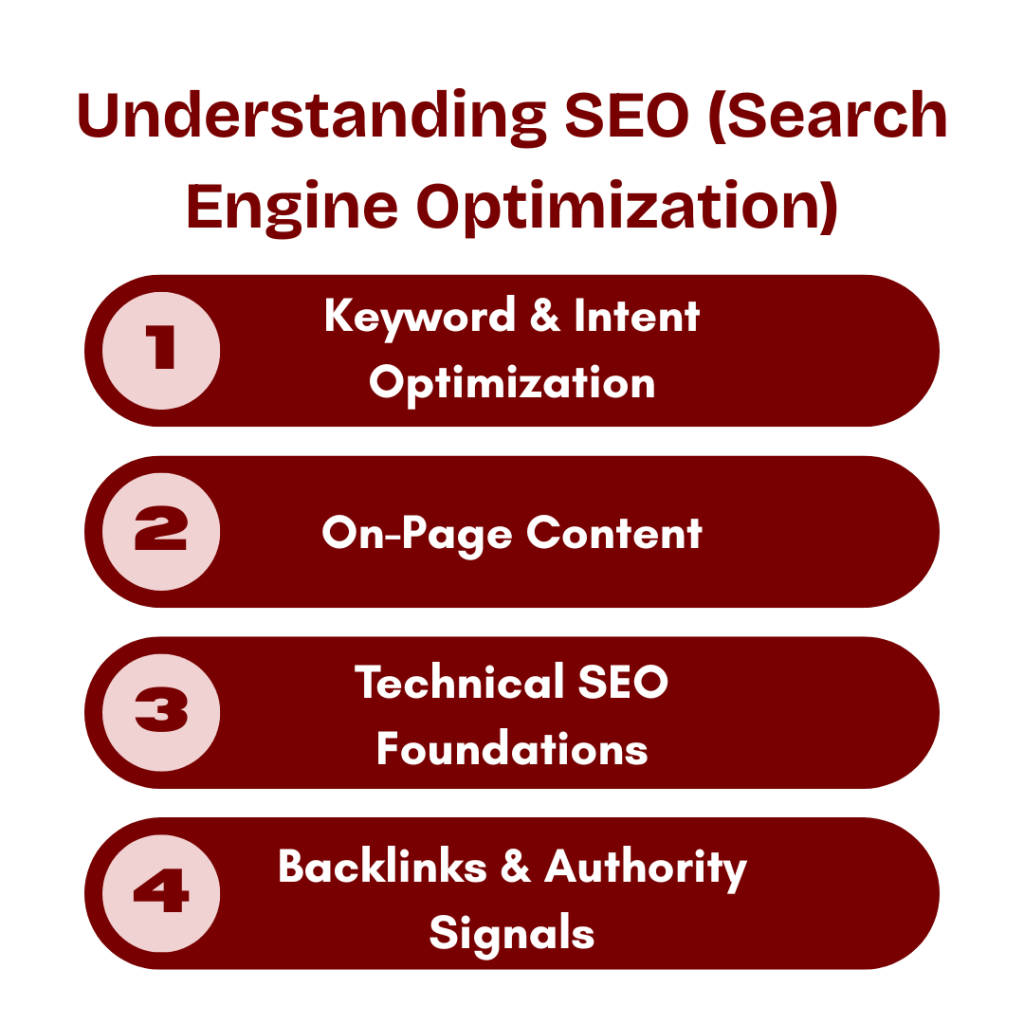
SEO remains the backbone of digital visibility, helping brands appear when users search through traditional engines like Google and Bing.
- Keyword & Intent Optimization: SEO starts with understanding what users search for and why. By aligning content with search intent, brands improve their chances of ranking organically and driving qualified traffic.
- On-page content: High-quality content, clean formatting, and a strategic header structure help search engines interpret information effectively. This improves both relevance and readability for users.
- Technical SEO Foundations: Factors like site speed, mobile responsiveness, indexing, and crawlability ensure that search engines can access and evaluate a website properly. Strong technical foundations support long-term growth.
- Backlinks & Authority Signals: Links from trusted websites act as endorsements that boost credibility. Building a strong backlink profile enhances domain authority and strengthens rankings over time.
Even with the rise of AI-powered search, SEO remains a vital cornerstone of online visibility.
Understanding AEO (Answer Engine Optimization)
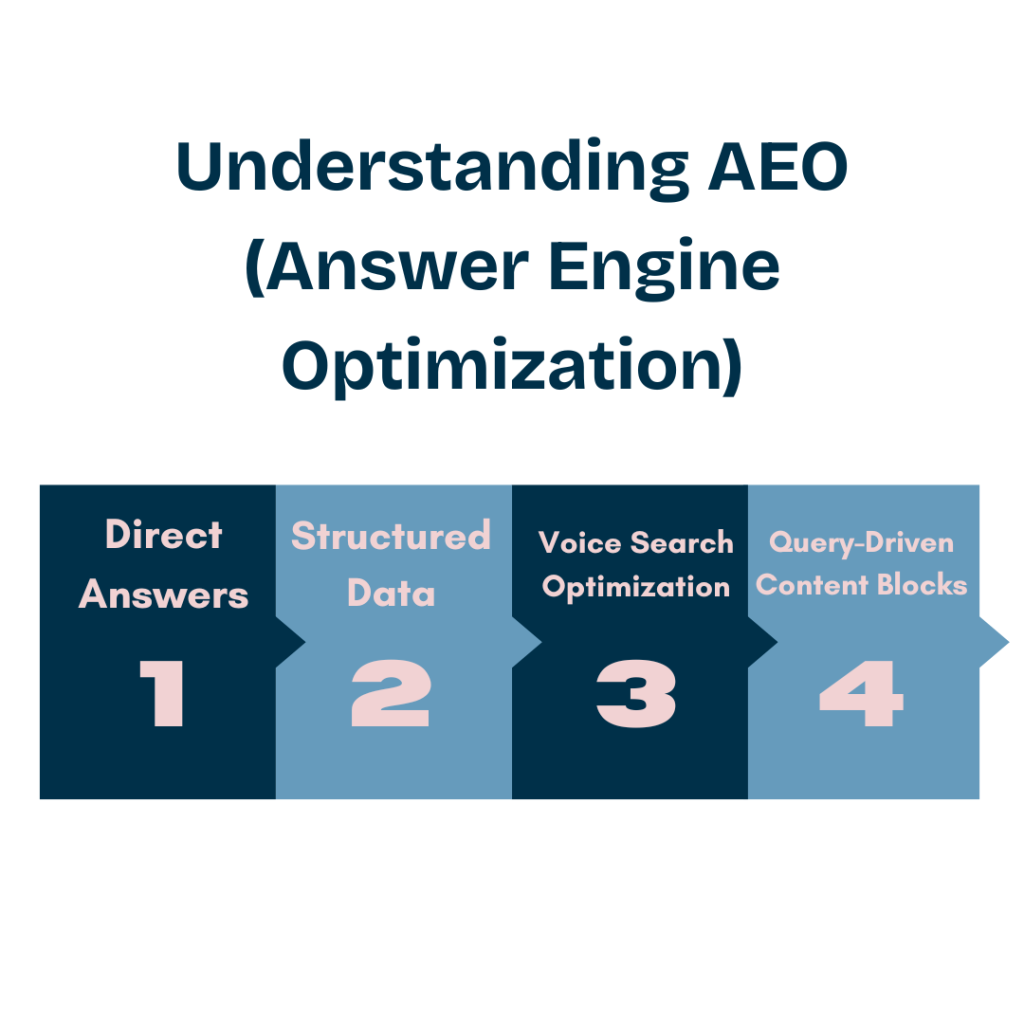
AEO is all about fine-tuning content for answer engines, such as AI chatbots, voice assistants, and those handy zero-click search features.
- Direct Answers: AEO is all about providing straightforward, brief responses that tackle user questions right away. This approach allows answer engines to pull information directly from your content without any mix-ups.
- Structured Data: By implementing schema markup, you make your content easier for machines to read, which boosts its chances of showing up in featured snippets and AI-generated answers.
- Voice Search Optimization: Given that many answer engines drive voice assistants, AEO needs to embrace a natural, conversational tone. The content is crafted to reflect how people actually speak, rather than how they type.
- Query-Driven Content Blocks: AEO promotes breaking down content into bite-sized, answer-centric pieces. This strategy helps engines pinpoint the exact information users are after, enhancing visibility across various formats.
As users shift toward conversational search, AEO is becoming essential for capturing quick, high-intent visibility.
Understanding GEO (Generative Engine Optimization)
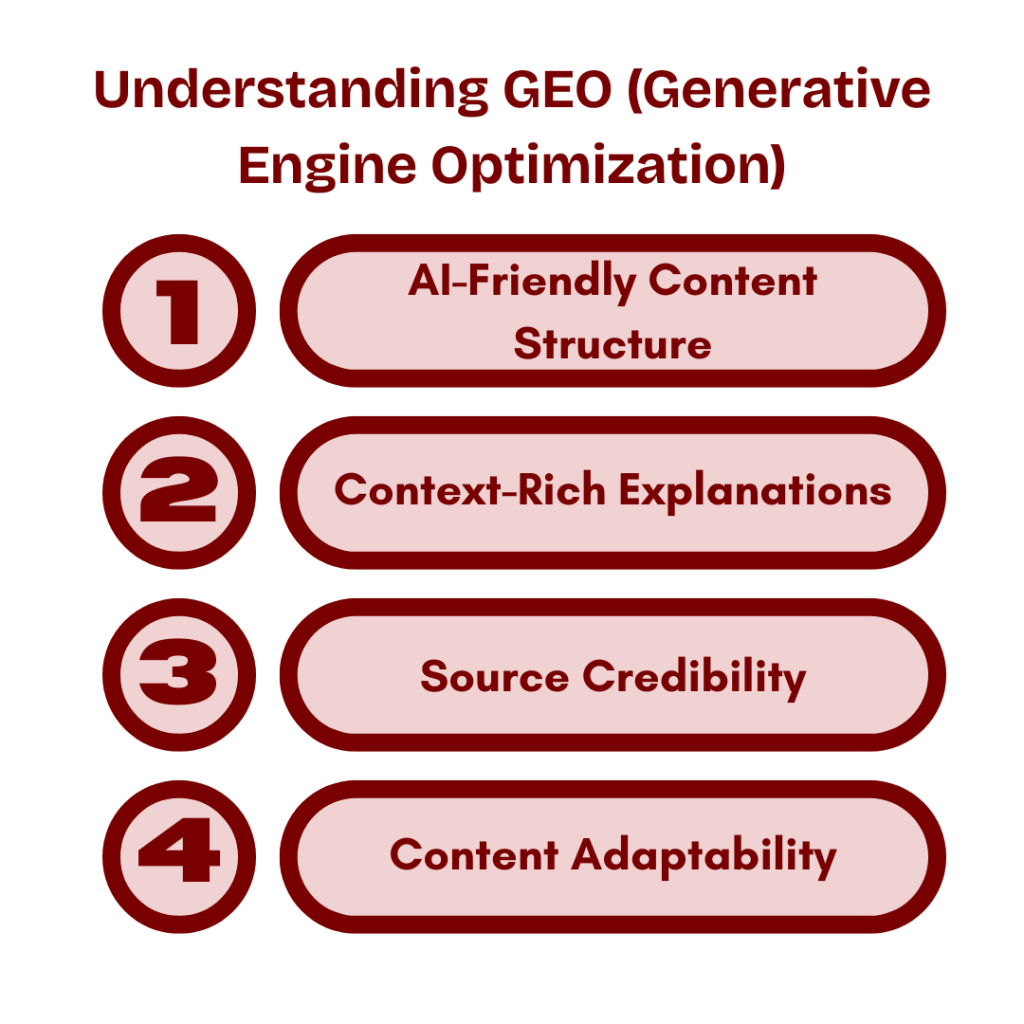
Unlike traditional SEO, GEO prioritizes context, clarity, and depth to ensure AI systems can interpret, summarize, and integrate your content accurately.
- AI-Friendly Content Structure: GEO focuses on creating content that’s clear and modular, making it easy for AI to digest.
- Context-Rich Explanations: Generative engines thrive on detailed context to deliver precise answers. GEO promotes content that goes beyond mere keywords, offering richer insights and supporting information.
- Source Credibility: AI systems tend to favor authoritative sources, which is why GEO emphasizes credibility markers like expert quotes, research-backed claims, and transparent data.
- Content Adaptability: Generative engines gather information from various sources, like blogs, FAQs, guides, and data points.
As generative search continues to expand, GEO is emerging as an essential component of contemporary visibility.
Why These Three Matter
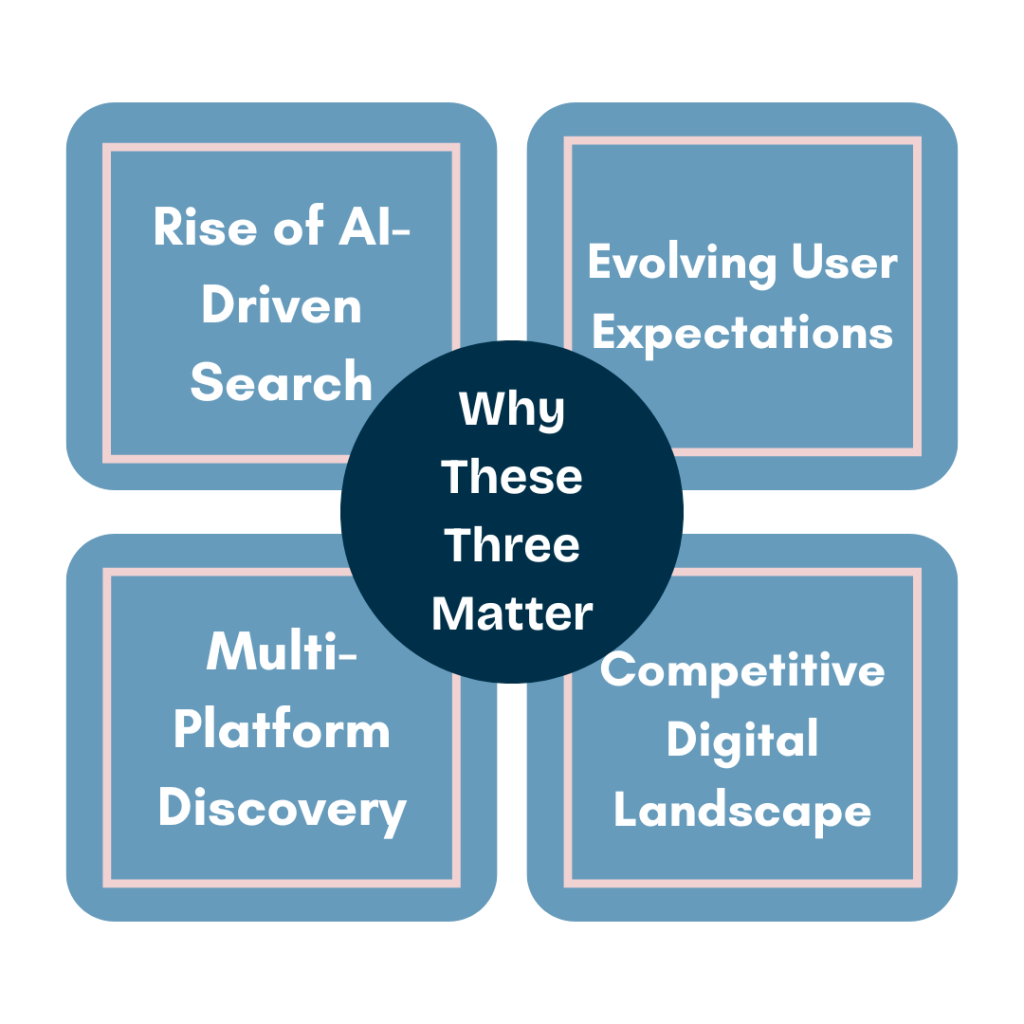
Search behavior is changing at lightning speed as users hop between traditional search engines, conversational tools, and generative AI platforms.
- Rise of AI-Driven Search: With chatbots, answer engines, and AI summaries dominating results, visibility goes beyond classic rankings. AEO and GEO help brands appear in these new, high-impact search experiences.
- Evolving User Expectations: People expect quicker, clearer answers than before. AEO supports instant responses, while SEO and GEO ensure those answers come from reliable, high-quality sources.
- Multi-Platform Discovery: Users now switch between Google, voice assistants, and generative AI tools. Combining all three optimization methods ensures your content shows up across every channel.
- Competitive Digital Landscape: Brands that rely only on traditional SEO risk falling behind. AEO and GEO create additional visibility layers, helping businesses stand out in an increasingly crowded digital world.
Similarities Between AEO, GEO, and SEO
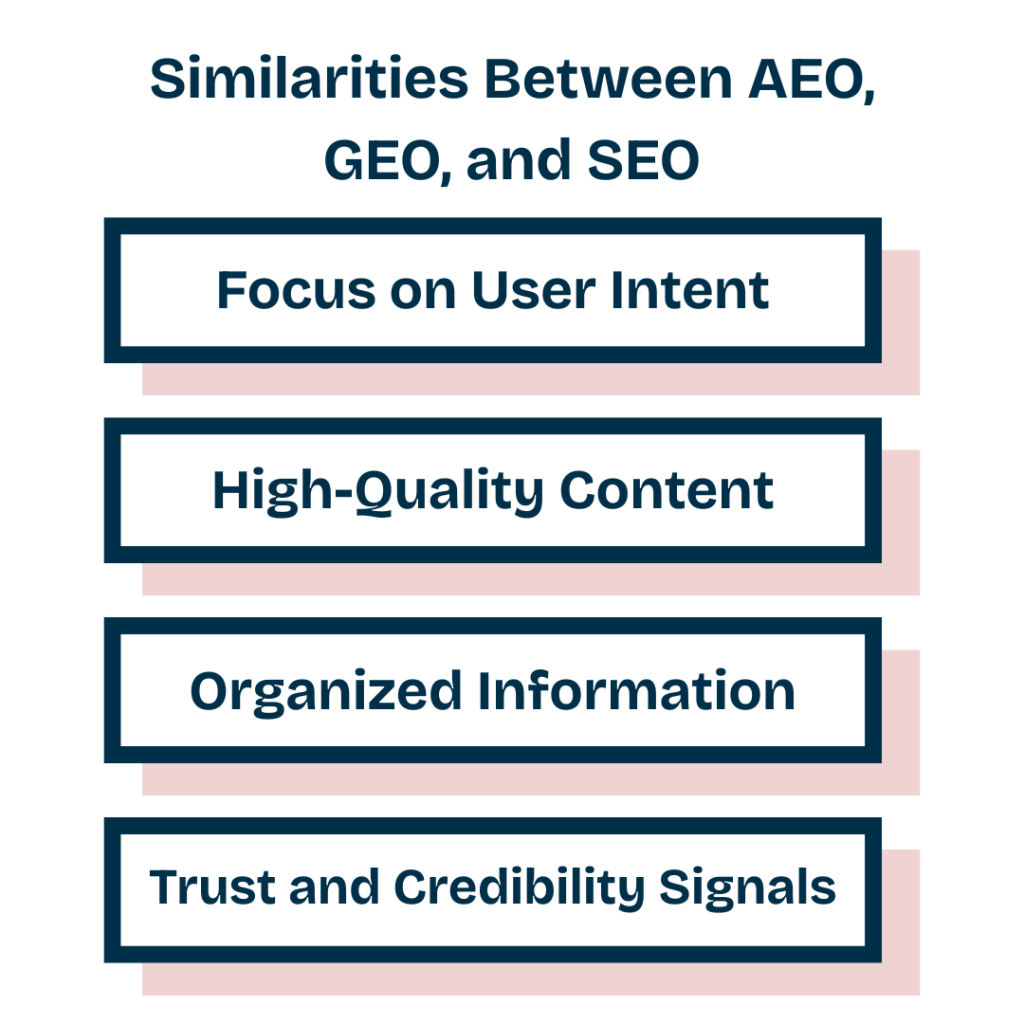
Even though each optimization method targets different types of search engines, they share a core purpose: making information easier to find, understand, and trust.
- Focus on User Intent: Each method aims to understand what users want and deliver information that answers their needs. Intent-driven content remains the foundation across all three.
- High-Quality Content: Strong, accurate, and well-written content is essential for SEO, AEO, and GEO alike. Search engines and AI models both reward clarity and expertise.
- Organized Information: All three benefit from clean formatting, logical flow, and well-defined sections. Organized content helps systems interpret and present information correctly.
- Trust and Credibility Signals: Search engines and AI tools prioritize authoritative sources. Expertise, accuracy, and consistent reliability matter equally across SEO, AEO, and GEO.
Whether it’s traditional search, answer engines, or generative AI, all three rely on clear communication and user-focused content.
Key Differences Between AEO, GEO, and SEO
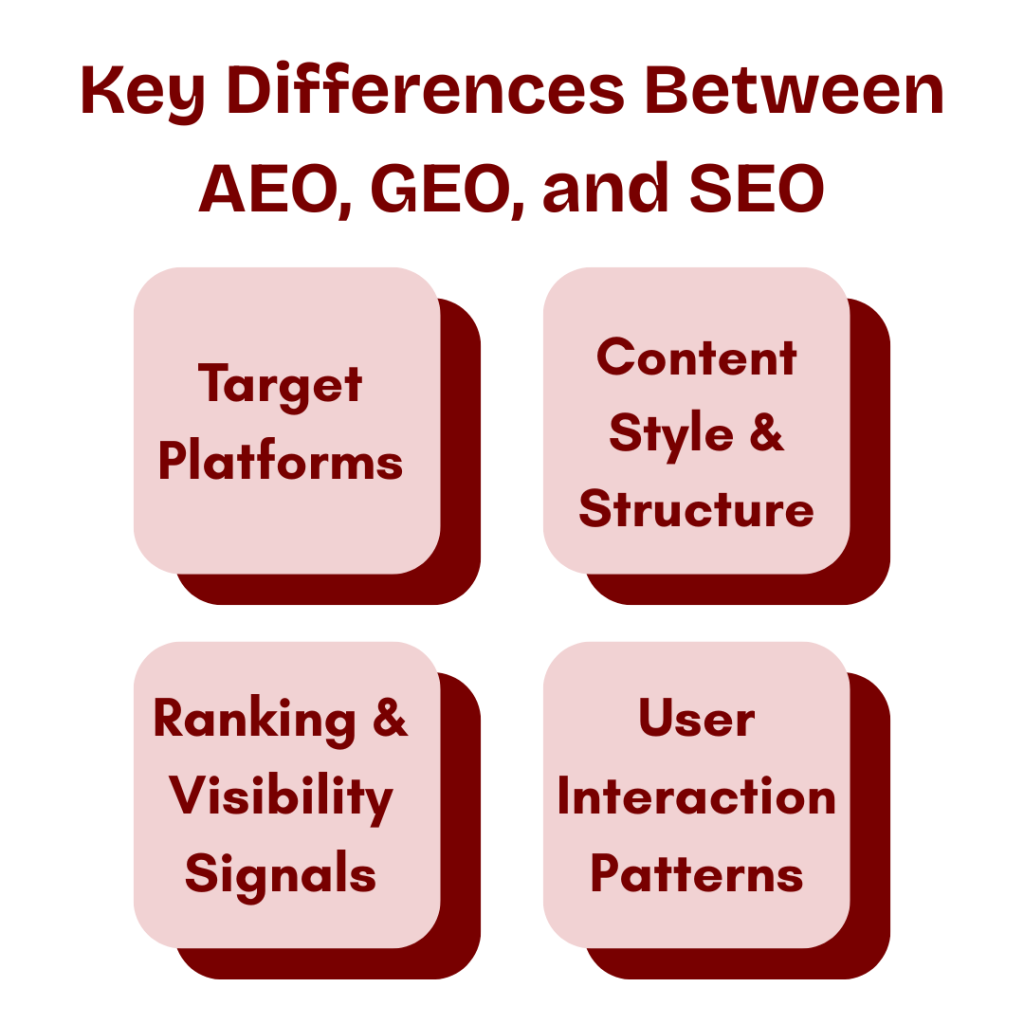
While these three frameworks have some principles in common, they each cater to different platforms, formats, and user behaviors.
- Target Platforms: SEO primarily focuses on traditional search engines, such as Google and Bing. AEO, on the other hand, focuses on answer engines and voice assistants, while GEO is geared towards optimizing for generative AI tools and LLM-based search platforms.
- Content Style & Structure: SEO typically employs long-form content packed with keywords, whereas AEO focuses on providing concise, straightforward answers.
- Ranking & Visibility Signals: SEO relies on backlinks, keywords, and technical performance to rank well. AEO uses schema markup and values clarity in its responses.
- User Interaction Patterns: SEO is designed for users who like to browse through multiple results, AEO is perfect for those looking for quick answers, and GEO caters to users who depend on conversational or generated summaries from AI tools.
Understanding these distinctions helps brands build a strategy that covers every modern search environment without overlap or confusion.
Future of Search Optimization
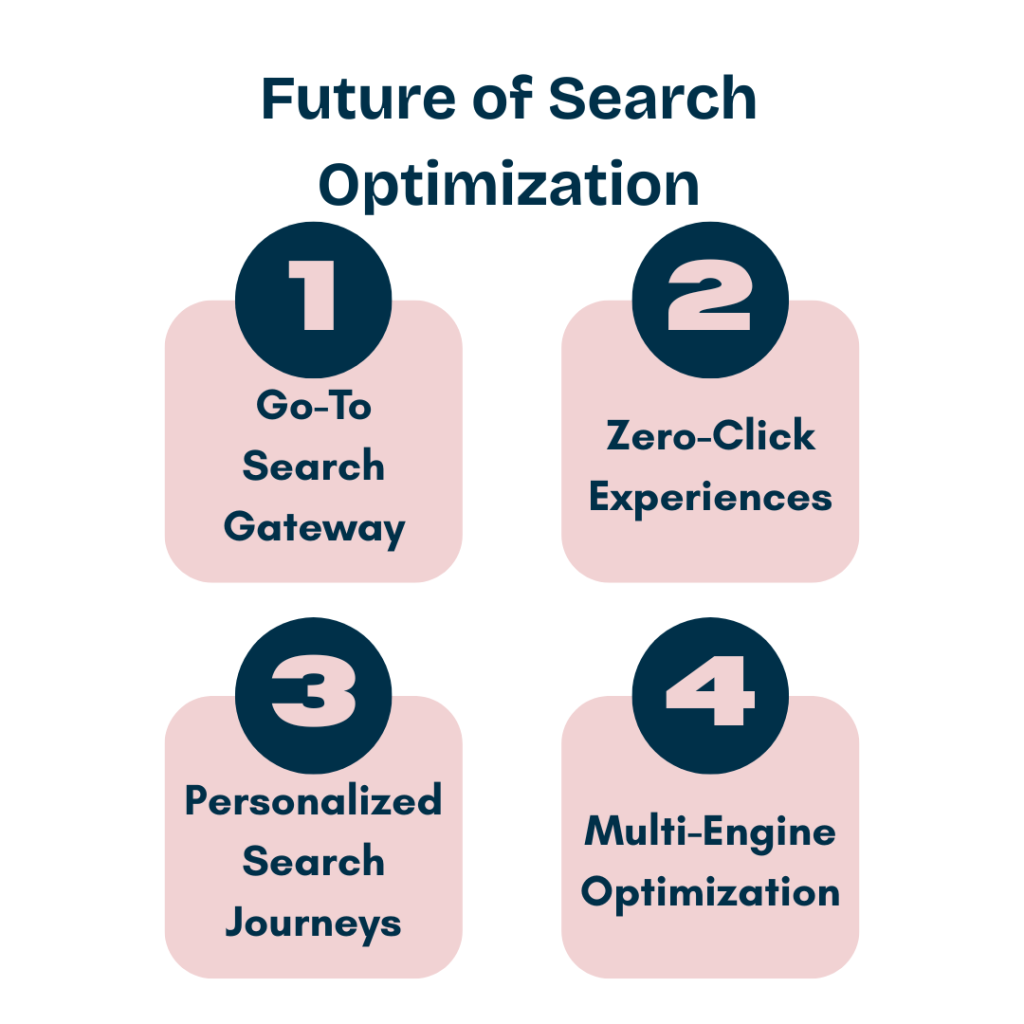
Search is heading into an era where AI-driven discovery becomes the default, not the exception.
- Go-To Search Gateway: Generative engines are set to take over traditional search methods for quick queries and research tasks. Content that’s well-structured and rich in context will lead the way in these AI-driven results.
- Zero-Click Experiences: Users will keep getting answers straight from search engines without needing to click through to websites. Creating content that’s optimized for answer engine optimization (AEO) helps brands maintain visibility, even as click-through rates decline.
- Personalized Search Journeys: AI systems will customize answers based on individual user preferences and browsing history. GEO ensures your content can be flexibly adjusted to provide tailored responses.
- Multi-Engine Optimization: Brands will shift from just optimizing for Google to also targeting answer engines, voice assistants, AI models, and generative platforms.
As users rely more on conversational tools and generative summaries, brands must adapt their content to stay discoverable.
Conclusion
As search evolves beyond the traditional engines we’ve known, brands can’t just lean on SEO anymore. The emergence of answer engines and generative AI has completely changed the way users find, verify, and interact with information across various platforms.
AEO, GEO, and SEO each have their own unique advantages, but their real power shines when they come together. By merging direct answers, an AI-friendly structure, and solid organic fundamentals, businesses can connect with users no matter how they search—be it through typed queries, voice commands, or conversational AI.
The future of search is for those brands that choose to adapt alongside the changing landscape instead of fighting against it. A cohesive strategy will help ensure that content remains relevant, easy to find, and trustworthy as search technology continues to evolve.
Deepak Wadhwani has over 20 years experience in software/wireless technologies. He has worked with Fortune 500 companies including Intuit, ESRI, Qualcomm, Sprint, Verizon, Vodafone, Nortel, Microsoft and Oracle in over 60 countries. Deepak has worked on Internet marketing projects in San Diego, Los Angeles, Orange Country, Denver, Nashville, Kansas City, New York, San Francisco and Huntsville. Deepak has been a founder of technology Startups for one of the first Cityguides, yellow pages online and web based enterprise solutions. He is an internet marketing and technology expert & co-founder for a San Diego Internet marketing company.



